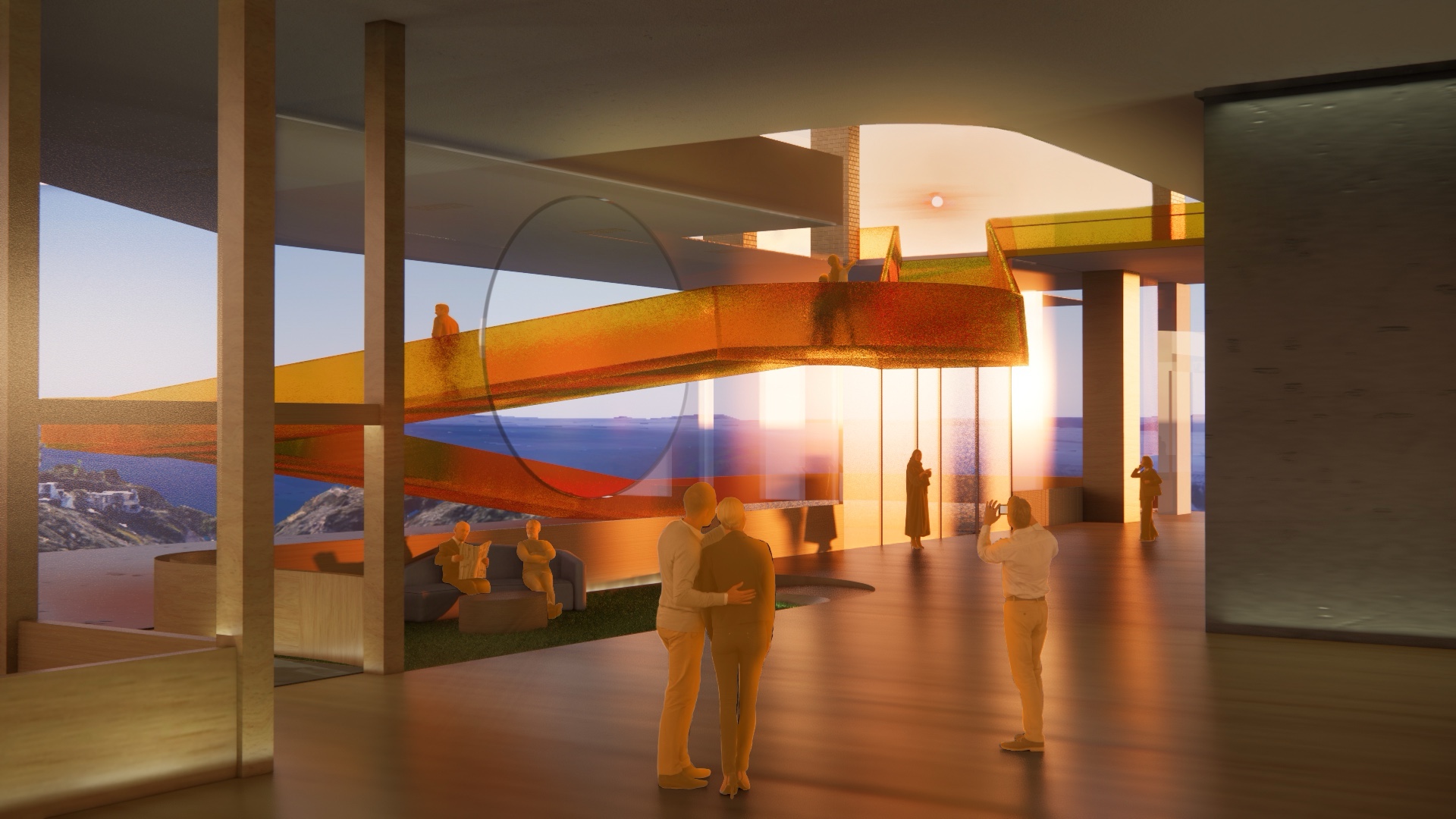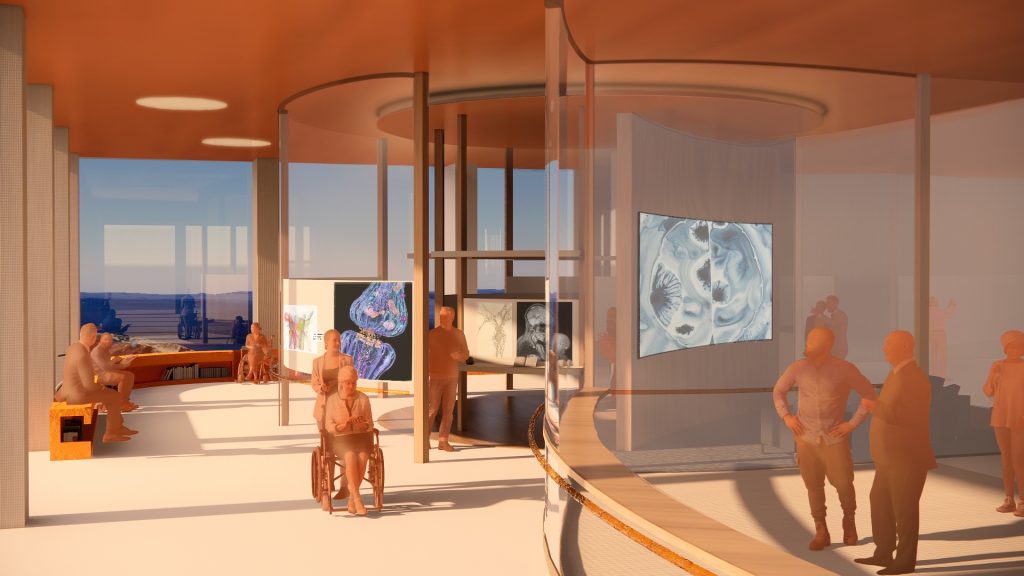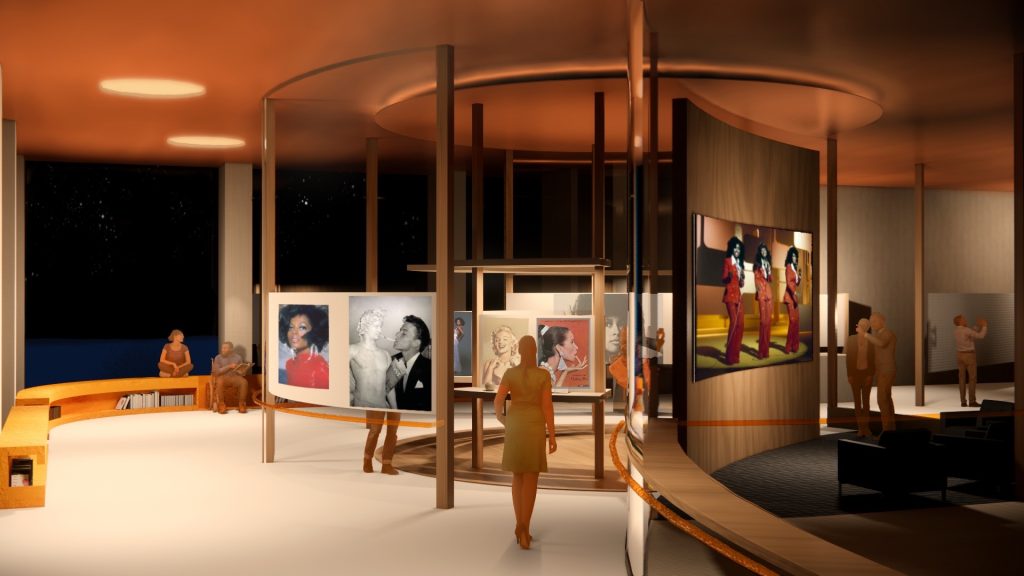
Parsons BFA Interior Design Students Earn Recognition in Prestigious Design Competition
Louis Kahn is considered one of the greatest architects of the 20th century. His buildings are instantly recognizable, and have inspired generations of architects, designers, and creatives. One of his most famous projects is the Salk Institute for Biological Studies in La Jolla, California, a world renowned scientific research center.
During the Spring 2024 semester, Parsons BFA Interior Design Studios participated in the John P. Eberhard Student Design Competition, in celebration of the 20th anniversary of the Academy of Neuroscience for Architecture. For their final studio project, students were encouraged to collaborate in teams to design a community center grounded in neuroscience principles that enhance quality of life. The proposed site for the projects is located near the renowned Salk Institute, designed by Louis Kahn.
Irene Kwon and Sherry Li, both BFA Interior Design students at Parsons, received an Honorable Mention for their project, while Shayni Morakhia and Mirayla Abdullayeva were both named Finalists. The competition included 80 participants from over 15 countries.
“Our design was inspired by the sun path,” says Li. “We structured the entire space to follow the natural trajectory of the sun, so at specific times of the day, people can experience the sunrise and sunset aligning perfectly with the pathways we’ve created. This connection to the sun not only enhances the spatial experience but also ties the design meaningfully to its location.”
Kwon adds that “The inspiration for this competition was my deep respect and consideration for elders. I always aim to design for those who are often overlooked. Growing up in South Korea, I became aware of the issue of elderly people living alone, often without proper care or attention. This has driven me to focus on creating spaces that foster intergenerational interactions, allowing for meaningful connections between different age groups.”


An exhibition space in Li and Kwon’s project, shown during the day and at night
Li and Kwon collaborated between two different studio sections, instructed by Carly Cannell, an Assistant Professor of Interior Design and the Program Director for the BFA Interior Design program and faculty member Victor Dadras. Throughout the class, students explored the connection between neuroscience and design, delving into themes including sensation and perception, learning and memory, emotion and affect, decision making, and movement, and focused on how the human body interacts with space both psychologically and physically.
“At Parsons, we strive to push the boundaries of interior design’s impact on the human condition in relation to the built environment, with a strong emphasis on evidence-based design as a critical component of the design process,” says Cannell. “Neuroscience principles have long been embedded in interior design, as we prioritize well-being, comfort, safety, joy, relaxation, and productivity. This competition offered an invaluable framework for students to explore the intersection of neuroscience and design, demonstrating how scientific insights can inspire creative solutions that enhance the lives of stakeholders. I was deeply impressed by the care and rigor students across five studio sections brought to their work, showcasing a profound understanding of the potential of neuroscience-informed design. Sherry and Irene demonstrated exceptional dedication to their project, consistently embracing and applying critical feedback while excelling in creative experimentation.”
“As we researched more about neuroscience, we gained a deeper understanding and appreciation for the project, which led us to fully commit to the competition,” says Kwon.
“For this project, we focused on accessibility, especially for elderly populations, while also ensuring the space was aesthetically pleasing and in harmony with its surroundings,” further explains Li. “A successful design, to me, is one that makes you feel at ease and “at home” the moment you step into it, blending functionality with comfort.”
Both students believe that interior design has the power to not only shape the spaces where people live and work, but to influence their actions, thoughts, and feelings. They believe that interior design plays a vital role in improving one’s quality of life, as it can be tailored to fit each person’s unique emotional and practical needs.
“Every element of a space—whether it’s the materiality, spatial arrangement, architecture, scale, sound, scent, temperature, or even its geological location—affects us in profound ways, enhancing how we interact with and experience our environments,” says Kwon.
The competition was an important learning experience for all the designers involved, and provided ample opportunities for collaboration, in true Parsons fashion. The natural environment of the Salk Institute campus gave the designers plenty of ideas to pursue, and challenged them to think about their project’s surroundings through a variety of perspectives.
“As we progressed, I learned that being a designer means balancing aesthetics with how a space influences emotions, actions, and even neurological responses,” shares Li. “It’s a complex yet rewarding process that requires a holistic approach to every design decision.”
During their time at Parsons, both Kwon and Li have been pushed to take risks, and design spaces that stand out artistically and emotionally. They have both become more inclusive designers, and now consider emotional and sensory aspects, in addition to physical ones, into their work.